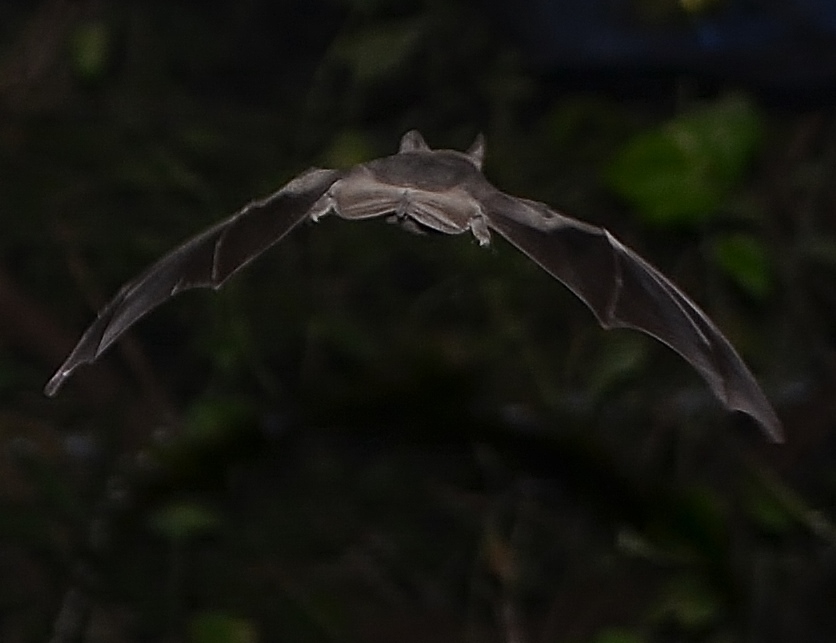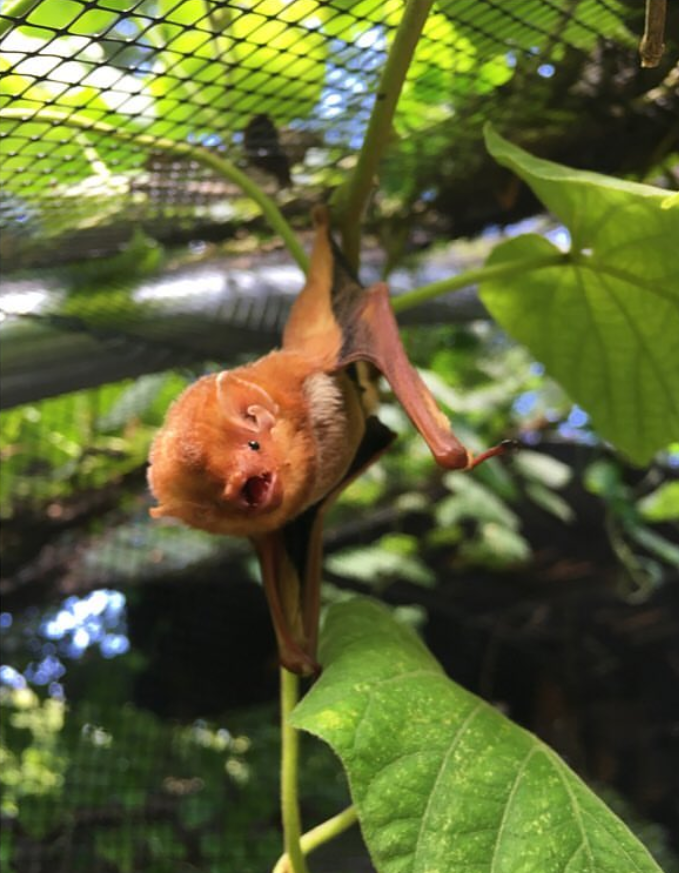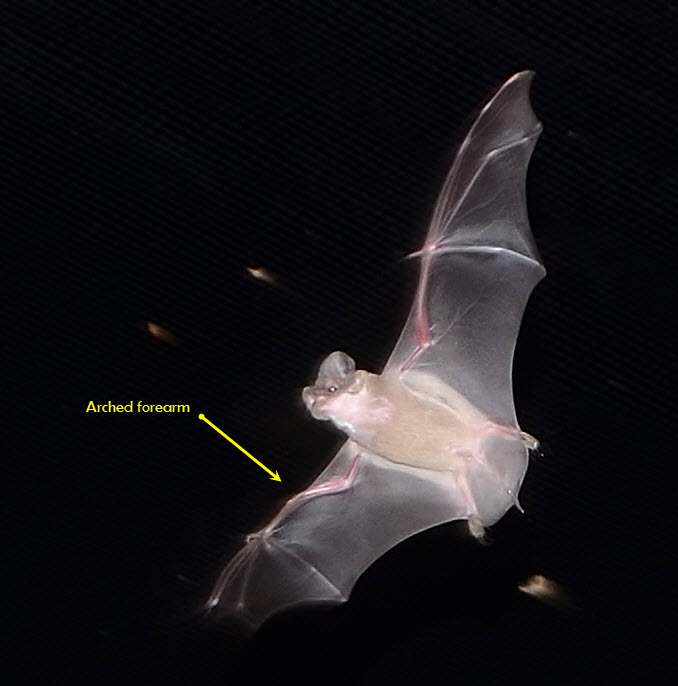Tri-colored South Austin
Here’s a beautiful tri-colored female that had been roosting in a stairwell landing on the second story of an apartment building in South Austin. She was in the same place for about a week with no sign that she had been able to fly or feed. Her location made her vulnerable to maintenance workers or perhaps a fearful apartment dweller with a broom.
Wildlife lovers Sonja Peterson and Thanh Vo had been checking on her and were worried that she had not seemed to move for a long time. They were relieved to finally see her stretch her wings a few days back, but were concerned that she might be injured and unable to feed herself. So we went to look and spotted her immediately when we pulled up to the building. We plucked her off the wall (with gloves on) and brought her back to check her out in the flight cage.
Her wings were beautiful, no spotting, no tears, no broken bones.

We checked her out under UV light and no florescence showed up that would indicate Pd, the fungus that causes White-nose Syndrome.
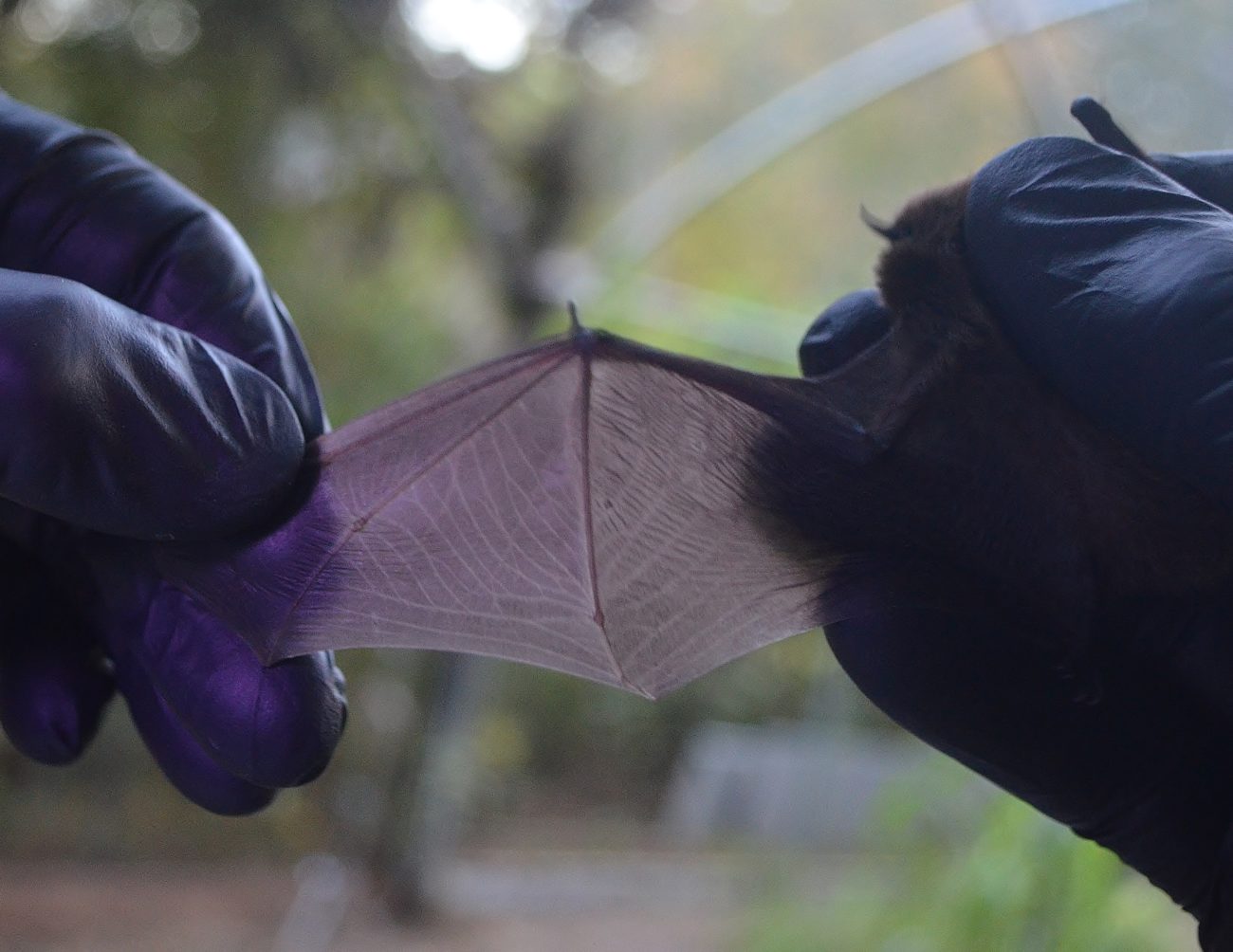
She flew right off when given the opportunity and we watched as she did about six laps around the aviary. This is way more continuous flight than the last tri-colored we took in a few days ago.
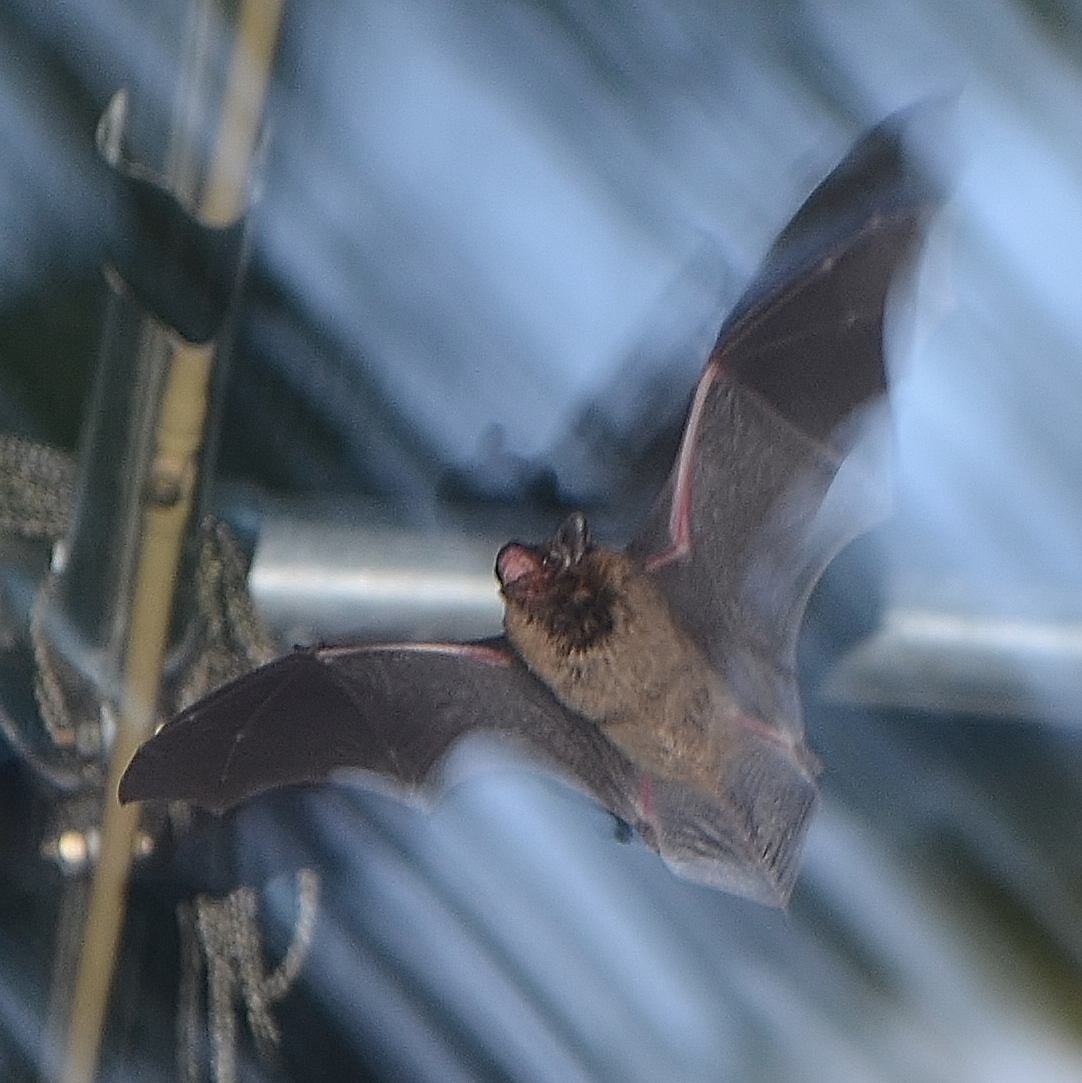
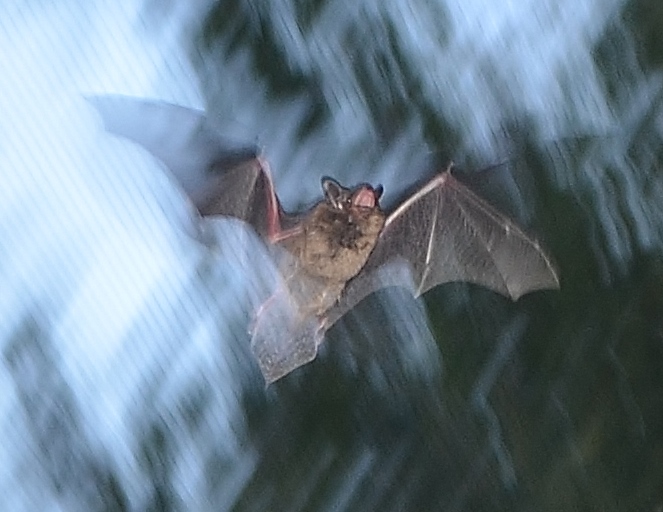
So this leaves us to wonder why she would roost in such an exposed location, vulnerable to any humans walking by or even grackles which could easily spot her against the white stucco.
Most of our tri-colored bats come to us from the upper levels of apartment buildings that have open-ended corridors leading to the various apartments. We think the bats consider these to be open-ended caves and feel quite at home there. At this time of year both sexes of tri-coloreds should be swarming at cave mouths and mating, the females storing sperm for spring births. Is it possible this bat is misplaced and hanging around wondering where the guys are?
We’ll feed her up and then bring her back to the same area and hope she finds a real cave to get her back on track.
Check out our local species info page: http://austinbatrefuge.org/tri-colored-bat/
Sonja and Thanh are doing great work with the feral cats around their apartment. Thanks to them this bat and all other wildlife will fare much better in their area. Thanks for caring Sonja and Thanh!

